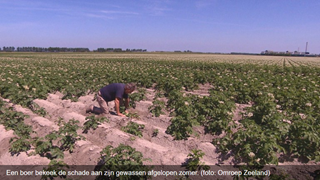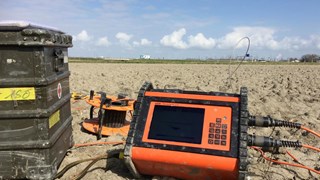DeltaDrip: More efficient use of water and nutrients
Climate-proof agriculture in the Dutch province of Zeeland
The deeper groundwater in the Dutch province of Zeeland and other coastal provinces of the Netherlands is salt, and salinization of the scarce sweet (ground) water occurs when too much groundwater is extracted for irrigation during dry periods.
Over the next 2 years, The project Delta Drip (https://deltadrip.com/) is investigating the extent to which water and nutrient savings can be achieved through innovative use of drip irrigation and fertigation, as an alternative to traditional irrigation techniques (including reel) and fertilization methods. The project generates knowledge about the differences in use of water and fertilizer in the soil between traditional and alternative techniques, so that growers can make better decisions about the application of new techniques for adaptation in the light of imminent water shortages due to climate change.
A trial has been started at Maatschap Waverijn in Phillippine (Province of Zeeland) to make better use of scarce fresh water in the subsurface through drip irrigation. The groundwater in the pilot field is normally deeper than 1.5 m below ground level, which means that tile drainage is not necessary, and that the plot is sensitive to drought. At the edge of the plot is a source to which the traditional reel is connected in times of drought. After that, irrigation is no longer possible because there is no alternative source of fresh water. This has led in the near past to drought damage and a loss of yield of around 35% of chicory.
The drip irrigation test was installed on 1 hectare of early potatoes. At 40 cm below ground level, at every 75 cm horizontally right below the potato row, are now drip irrigation tubes. On one half of the plot the tubes provide the roots of the crop with water, on the other half the potatoes also receive the required fertilizer via the hoses (fertigation). With drip irrigation, now only 8 cubic meters of fresh water per day is necessary, compared to around 50 cubic meters per hour when the traditional reel is applied.
Within the test set-up, the soil moisture content is measured at 3 different depths, as well as the nitrate leaching of the plot. Farmer Waverijn receives a daily signal about the moisture levels. The test plot will also be watered with the traditional reel to measure the difference in water use with drip irrigation.
For more information, contact our colleague Beatriz de la Loma Gonzalez (mailto:beatriz.delalomagonzalez@acaciawater.com)
 Foto_Omroep_Zeeland_Deltadrip
Foto_Omroep_Zeeland_Deltadrip
 Locatie_Waverijn
Locatie_Waverijn
 CVES_deltadrip_2019
CVES_deltadrip_2019